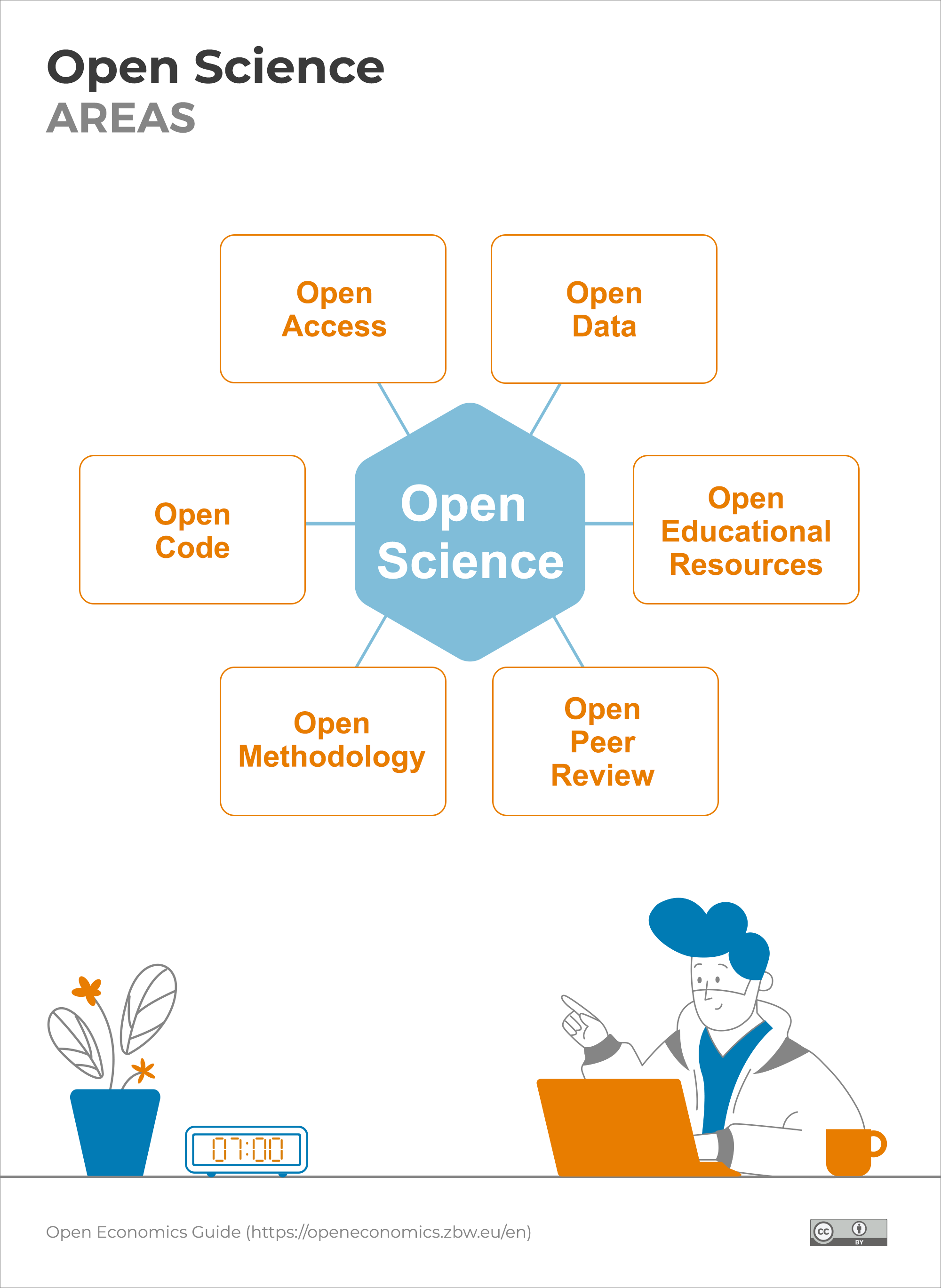Introduction to Open Science

Open Science comprises processes, methods and tools that open up the research process while taking advantage of the opportunities offered by digitization. Many Open Science practices can directly serve the implementation of guidelines for good scientific practice Fundamental principles of Open Science are transparency, reproducibility, reusability and open communication.
The Open Science community has developed a number of tools and services that can be used by researchers in the research process.
Main areas of Open Science:
- Open Access: Publishing research results in an open way, and making them usable and accessible for each person
- Open Data: Making research data public as widely as possible and making it reusable as FAIR Data
- Open Code: Making research software developed in research projects publicly available and reusable, usually as Open Source with appropriate licensing.
- Open Educational Resources: Using free and open materials for education and in teaching, and making them available
- Open Methodology: Documenting the use of methods as well as the entire process behind them, if this is practicable and relevant
- Open Peer Review: Transparent and replicable quality assurance through Open Peer Review
The core of Open Science is to make the output of research work openly accessible, understandable and reusable to the greatest extent possible. This can include everything from the initial idea, methods, program code and research data to the final publication. The degree of openness can vary due to aspects such as data protection. The principle is "as open as possible, as closed as necessary." Behind this is the conviction of the Open Science community that social benefit is maximized if research findings are openly accessible to as many people as possible as early as possible, even outside the research community.
